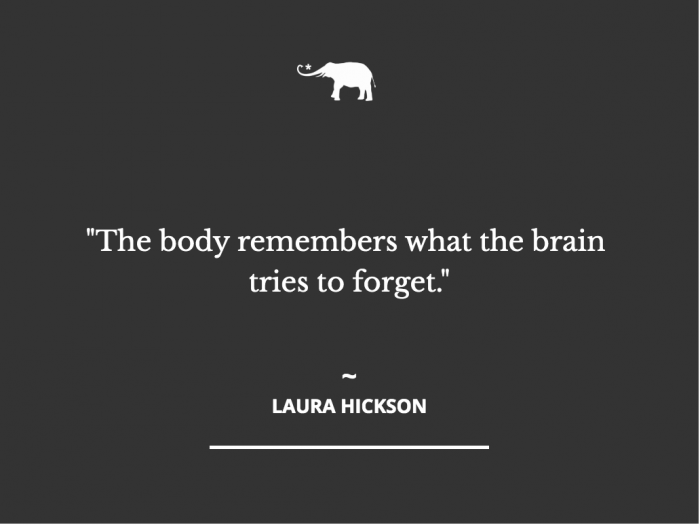View this post on Instagram
Today I almost lost my sh*t outside, and then inside, Lidl.
It wasn’t the broken mayonnaise jar or the tomatoes rolling down the street that set me off, but the kindness of a stranger who got out of his car and handed me a plastic bag.
I thanked him without making eye contact and promptly gathered up the mess that had been my groceries and the torn paper bags and marched back into the supermarket to…to what? What was I going to do that required my fight-or-flight response to be so strong? My heart was pounding, my arms and legs were shaking, and I was practically screaming in Spanish about the paper bags. Where was this adrenaline coming from?
Thankfully, the lady at the till was super calm and told me to get a new jar of mayo and two more bags. By now, there was a chorus of abuelas chiming in about how useless these paper bags were, and I felt somewhat vindicated as I walked unnoticed to the condiments aisle to replenish my lost 99-cent jar of mayo. That was when I noticed my highly activated physical state—the wobbly legs, the dull chest pain, the shaky hands, the sweat.
I am glad that I can observe this now as something that is happening through me, which I can observe and explore and learn to control. I no longer apologise for sounding like a hippy. Getting a handle on this will change my life.
What’s the back story? Well, I’m chronically stressed and have a dysregulated nervous system—obviously. It’s no exaggeration to say that it has been this way since before I was born. Apart from the fact that my mother carried me in her womb for the first eight months of 1977 in Northern Ireland, we now know that my gestation and birth were a fight for life that my baby brother did not survive.
After losing him at full-term, her belly going cold on a windy beach a few days before his due date, my mother was eventually told that I should not have survived and that her future children would have to be induced early, if they were to see the light of day. I am happy to say they were and they did.
Since beginning my healing journey, I often wonder if the layers of trauma I am currently working through began in those weeks before my birth. Certainly, the confusion and devastation of our small family’s loss would have been an emotional imprint that a two-year-old would take 40 years to process.
The sadness and the havoc that wrought on my parent’s marriage were played out for the next 10 years and accounted for another layer of the onion. My parents never saw their first little boy. The only idea of what he looked like came from a kind nurse who told them that he had the longest, most beautiful eyelashes she had ever seen. Add to the mix the circumstances of time and geography, the way a helicopter makes the roof vibrate and a bomb shakes you from the ground up, the windows going first convex then concave before shattering into a million pieces, and you have the perfect polyvagal storm.
When I first started reading about emotional addiction—where our nervous systems become addicted to the chemicals that are produced in times of stress, especially chronic stress—one moment in my life stood out. It was early 1997, the year before the signing of the Good Friday Agreement, and I was in my second year at university. It is said that the darkest part of the night is just before the dawn, and this was true of those months before peace.
My mother loved set dancing, a form of traditional Irish dancing in which people dance in groups of four pairs arranged in a square or set. It involves a lot of fast footwork, complicated arm movements, rapid swinging, and much laughter. That winter, when I was home for the weekend, one of my sisters and I would go with our mother to the small village near where we grew up and practice our negligible set dancing skills in the Gaelic Athletic Association Hall.
Throughout Ireland, these GAA halls serve as sports centres, music venues, and youth clubs. They are the heartbeat of the community. I had my first kiss behind one, and football matches, weddings, and funerals alike are often celebrated in a way only Irish people can within their walls.
During this time, there was a period of what was known as tit-for-tat killings. First, a random Catholic would be shot, then a Protestant. On and on it would go for weeks. Loyalist paramilitaries had taken to attacking GAA halls, and as a precaution, many of them (including the one we were in, which was easily the biggest building in the village where my father was born) had installed cameras and cages at the entrances.
One night, during a break in the dancing, I was standing in front of the monitor while the others got their breath. I looked at the screen and for a moment, I swore I could see two black-clad figures in masks with machine guns in their hands. It’s still difficult to describe the fear I felt—or rather, what the fear felt like.
I will say this: I could feel the adrenalin drip from one place inside me to another. It was as if something splashed from my diaphragm to my gut. As I looked around the large room, I felt on the verge of first losing control of all bodily functions and then, along with the seven or eight other people there, my life. And yet, I couldn’t wilfully move a muscle. Not an arm or a leg.
This curious sensation of the internal alarm system in full crisis mode, yet not being able to move my body, happened again a few years later when I was attacked in broad daylight in New York. I had been staying with a cousin, and every night on the news, there was a story of someone being shot and killed on the street.
I was convinced this man had a gun. I was convinced he was going to kill me; he said he was going to kill me. And I did nothing. I didn’t scream. I didn’t punch. I didn’t run. I didn’t even know my leg was shaking until I glanced down and saw the fabric of my wide-legged trousers moving rapidly and realised that I had gone completely numb.
I survived. Eventually, the attacker in New York ran off by himself. He didn’t physically harm me as much as he said he was going to, and he didn’t get my handbag either.
I don’t know what I saw in the CCTV monitor of the GAA hall in County Derry that night. What I do know is that a few weeks later, as one of our dancing friends (a gentle, giant man in his 60s) was locking up for the night, a group of men pounced. They bundled him into a car, drove him past our house, and shot him dead by the side of the road. He was a father of six. I often think of him and what he must have gone through in that 10-minute journey. I have no words to describe the horror.
A traumatic event is like dropping a stone in a puddle. The circles spread out and affect everything that is in the water. The body remembers what the brain tries to forget.
So the next time you or someone you know “overreacts” to the smashing of a jar of mayonnaise, or a wrong turn on the highway, take a moment to think about their layers. What circle of the puddle are they in? What is their body remembering? Think about what lies beneath.
Send them loving-kindness. And breathe.
~











Read 0 comments and reply